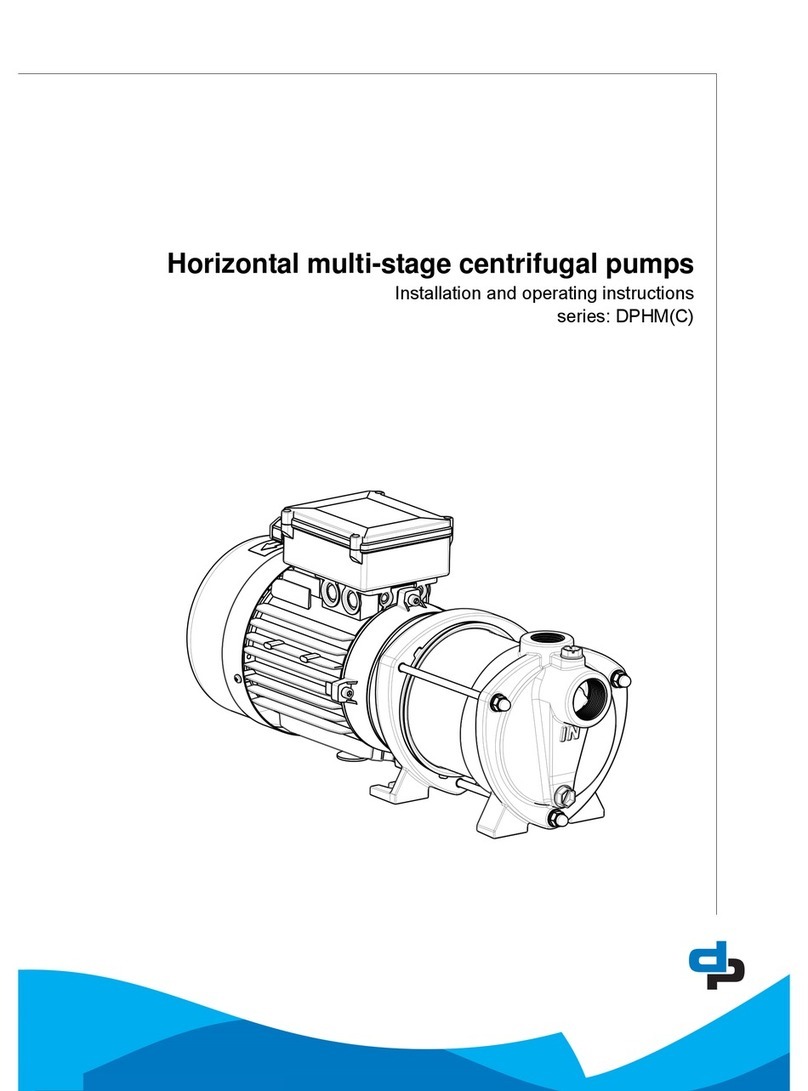
9
The pump sends coded impulses to report failures.
Special modules can decode these impulses and can
specify the failures through failure lights or optical
contacts.
3.5.2 Two pump operation
The different operational phases of the pump are
combined through an algorithm in two pump
operation which enables the pumps to recognise
each other. The ratio of pumping times between
levels S3, S2, S1 and the lowest off switching level
are saved individually for each of the two pumps. The
pumping time that is calculated is assigned to the
following 7 pump cycles. Volume detection is
performed independently after every eighth pump
cycle.
The pumps can be operational simultaneously or in
sequence because the choice for starting one of the
pumps is random at level S2 or S3. When the water
level drops to below level S1 in relation to a pump that
is not operational, this pump will conclude that a
partner pump is available. The information about
there being a partner pump will be saved in the
memory of both pumps. The pump that has just been
operational, will save level S3 as the on switching
level. The pump that was not operational and which
detected the water level has dropped up to below
level S1, will now save level S2 as the on switching
level.
The two pumps will switch on in turns to on switching
level S2 when the water level drops to below level S1
of the pump that was currently not operational. When
the pumps have detected that there is a partner
pump, they will be switched on in turns when level S2
has been reached.
When sewage continues to flow into the pump sump,
the time is saved that is required to reach level S2
and level S1. The pumping time will be corrected
based on this. The same correction method can be
used for volume detection to compensate in changes
in the required pumping time when a partner pump is
available.
When one pump cannot supply sufficient pumping
capacity to drain away the incoming wastewater, the
second pump will be switched on when level S3 is
reached. You can determine when the pumps should
be switched off depending on the speed at which the
pump sump fills up and the time that is required for it
to be pumped and emptied. This can be determined
by both calculation and detection of the lowest off
switching level.
When one or both pumps have not been in operation
for a period of 24 hours, the pump or pumps will start
until the lowest off switching level has been detected.
The test run will be automatically activated after every
24 hour period when the water level has not
demanded a pump start.
3.5.3 Points of special interest
It is very important that the vent hole of the pump
housing is opened because the pump continues
running until the pump suctions air every eighth cycle.
ATTENTION
When installing a pump with an
automatic level regulation, the pump
must be at least 20 cm from the wall.
ATTENTION
The pump must be installed in such a
way that the inflow of the drain can
never reach the sensors for the level
regulation.
When a pump with automatic level regulation detects
that the water level is still above level S3 after 16
seconds, the pump will stop for a period of 3 seconds
will give a coded report for high water. A pump with
automatic level regulation must, therefore, only be
used in a drain.






























